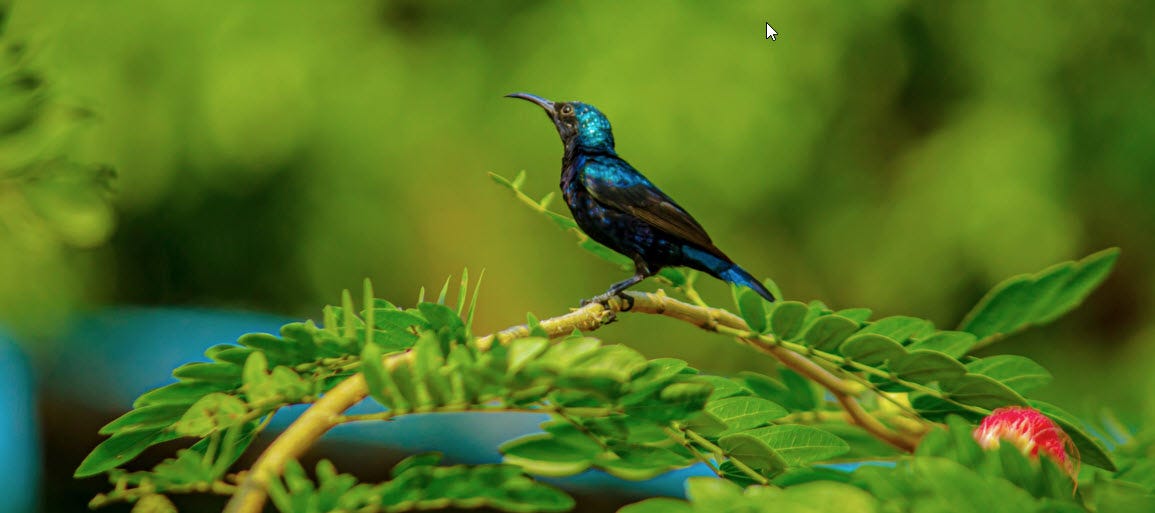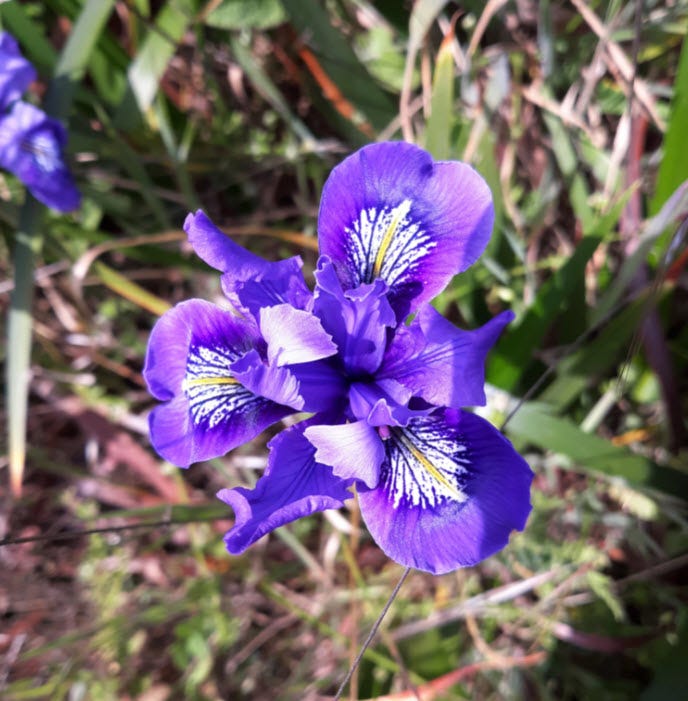What Happened on the Day Winter Turned into Spring?
Monitoring Earth's changes on the Spring Equinox
Welcome! You’re at Mother E, a newsletter— telling the stories about the connections between people and other species in a changing world.
Did you miss the last post? Tiny Forests at Our Feet-Inside the Secret World of Moss
Not a subscriber yet? Sign up for the FREE twice a month emails below.
WE ALL JUST SAILED PAST the Spring (or Vernal) Equinox in North America on March 20, 2021. That's one of two days in the year when the hours of daytime and the hours of nighttime are approximately equal. The other equinox happens in the Fall.
The Spring equinox is a time of suspension between two worlds, the winter world receding and the summer world advancing. What does Spring mean for nature? Generally speaking, it's a time of growth and new life.
Budding shoots sprout on my apple tree in freshly minted yellow-green color. Tiny brown mushrooms peek up from the forest floor after a recent rain. A raven flies overhead with a branch for nesting materials. A vivid-purple Douglas Iris blooms along a coastal path. Frogs ribbit-sing me to sleep at night. Life skips along its spring path.
But there is another current going on too that we need to bear witness to if only so we can find the best path forward. As we balance between two seasons, we also balance precariously between two possible futures. The most hazardous future could have hotter summers expanding to six months of the year and side effects that cause the earth to be unable to support much life. The alternative preferred future could bring a more stable and livable world.
Here are some of the contrasts occurring on the Spring Equinox, 2021
On March 20, 2021—one day--Earth lost around 3 billion tons of ice, contributing to sea-level rise and changes in the Arctic and Antarctic. The annual rate of ice loss is about 1.2 trillion tons each year as of 2020. Iceland glaciologists refer to glaciers as "ancient manuscripts" due to their many layers compacted over thousands of years that store data about the past. Losing these ancient manuscripts is losing some of our scientific histories. It's also deeply destabilizing for all life in those polar regions, as solid ice surfaces melt away to growing miles of liquid ocean and food sources for wildlife and Indigenous people alter or disappear.
On March 20, 2021, we observed International Earth Day (IED). Every year, the Spring Equinox is a time for the world's people to put aside political and geographical differences to protect the earth. One positive story of Earth protection is the rise of Ecosystem Restoration Camps. On March 20, 2021, these camps numbered 37 worldwide in 26 different countries and were active sites. John D. Liu, one of the founders, is a visionary who helped regreen the China Loess region. Here in Northern California, there is an Ecosystem Restoration Camp in Paradise, where a devastating fire destroyed the town on November 8, 2018. They seek to restore thousands of acres of burned forest and community areas in Butte County CA.—an ambitious goal to help all of nature--including its people--heal.
On March 20, 2021, New South Wales, in Australia suffered torrential rains that brought flooding described as "the worst in 50 years." Around 40,000 people were displaced from their homes. Even spiders sought higher ground to avoid being swept up in the rising floodwaters which swept homes away.
On March 20, 2021, in the Western U.S., drought conditions were impacting about 111 million people. Areas of orange to dark red show "severe to exceptional drought." (Map from Drought.gov)
On March 20, 2021, the weather in Delhi, India was warm and dry. Many residents in this city of 21 million people relied on rainwater storage systems for their water that day. These systems conserve precious groundwater. Delhi receives about 617 mm (24 inches) of rain annually, so the city's Delhi Jal Board mandates rainwater collection systems for homes over a certain size. India has an impressive 4000-year history of collecting and storing water because it's often "feast or famine" for water availability. They collect rainwater through rooftop collection systems and channel it into home or community wells to replenish the aquafer. Rainfall in some areas gets routed to community-owned rainwater storage wetland reservoirs called "Johads." The Western U.S. can learn much from India's low-tech, sustainable rain water-collection and storage systems.
On March 20, 2021—one day-- roughly 80,000 acres of trees were destroyed or perished on Earth, a loss of about 48 football fields every minute. Forests worldwide continue to shrink, even in the face of efforts to replant and conserve. Visit this visual UNFAO webpage for a look at how forests are faring and how their loss affects other species.
The week of March 20, 2021, Save the Redwoods League promoted and worked on their "Redwoods Rising" campaign to restore about 70,000 acres of degraded and logged redwood forests, working to "Create the Ancient Forests of the Future." This is a collaborative venture with California State Parks and the National Park Service. Redwood trees are one of the best trees for carbon sequestration—removing excess CO2 from the atmosphere, so this restoration effort will help the climate crisis. Ventures like this to preserve and restore wildlands benefit when multiple agencies and non-profits work collaboratively together to reach ambitious goals.
Which future will win out—restoration and preservation or continuing degradation of our earth?
When I look at the growing impact of the earth's warming and destabilization, I'm reminded of the childhood game of Rock-Paper-Scissors. In this game, a fist gets knocked three times into an open palm. On the third time, the player's hand chooses whether to be paper (flat palm), scissors (two fingers that "cut"), or a rock (a fist). It's a game of competition. Rock crushes scissors, paper covers rock, and scissors cut paper. Someone inevitably loses.
The new climate crisis game is Fire-Water-Air. Which will impact you this year? Human-wrought changes are throwing Earth's climate off balance. Fires are now more frequent, longer, and hotter. Water can become a threat in a destabilized climate with intense hurricanes, flooding, or droughts that dry up water sources. Air can wreak havoc with heatwaves, destructive high winds, or rising amounts of CO2 that affect all life and acidify the oceans. This game is one where we all lose unless we can work cooperatively to turn it around, reduce human damage to our planet, and help Mother Earth heal.
Imagine if you had a close relative or friend who suffered from a serious health problem that was treatable. It would be vitally important to discuss treatment options, get medical help, and provide support. We do have a relative that suffers from a serious disease—one of toxic stress and removal of resources at a rate faster than can be regrown or replaced. We would never dream of asking a person to donate more blood or tissues than they could remake, yet we do this all the time with our earth when we exceed Earth's limits by overfishing, excess mining, or cutting down more trees and virgin forests. The earth has its own cycle of natural renewal, provided not too many parts are destroyed.
What happens next is partly up to us and partly up to the governments of the world. It's clear that widespread systemic change is needed. The promising factor here is that the types of changes we need will create a better world than we have today.
Our science shows that when cities and communities protect and enhance nature, the built environment can become more livable, sustainable, and equitable.
Laura Crane, Cities Program Director for The Nature Conservancy
How to make a positive impact
How do we move towards the more livable version of our future? As I see it, here are the three biggest-impact actions we need to take:
Preserve nature and wildlands to protect the biodiversity of species (local actions here are key)
Restore degraded areas of the planet
Reduce our purchases and activities that create CO2 emissions
It's helpful to recognize the problem and search for solutions collectively. Everyone is needed in this conversation. Experts are saying a "wartime effort" will be required to turn the planetary crisis around.
During WWII, the whole population in the U.S. and affected countries was involved in actions to help the war effort. My mother, then about 12 years old, described planting a vegetable garden for the first time, and how the government required rationing of food and gasoline so more would be available to send to those on the front lines of the battle. There was an understanding that everyone had a role to play and a small sacrifice to make.
There was a powerful collective consciousness that we had to do this to make a better world. The same holds true now, but the stakes are even higher. If we tend to forget, stepping into nature or the wilderness can remind us of all we have to lose if we don't take on this task. And looking at the faces of our younger generations will remind us of all we have to gain by giving them a future when we do act.
In this challenging year, personal and planetary healing is crucial. I find redwood forests healing so I offer you this magical 3-minute forest video. Don't miss the climber on a Giant Sequoia at 2:10, because "Everyone belongs in nature."
Want to give the earth a little love by reducing your CO2 emissions? Everyone can do this action. Check your power bill, go online, or call to ask about your power company's energy source choices. Many will offer a 100% green tech option, so all your electricity comes from sources like solar, wind, and geothermal. Where I live in Northern California, PGE and Sonoma Clean Power offer Evergreen for just a few dollars more per month. Win-win for all.





